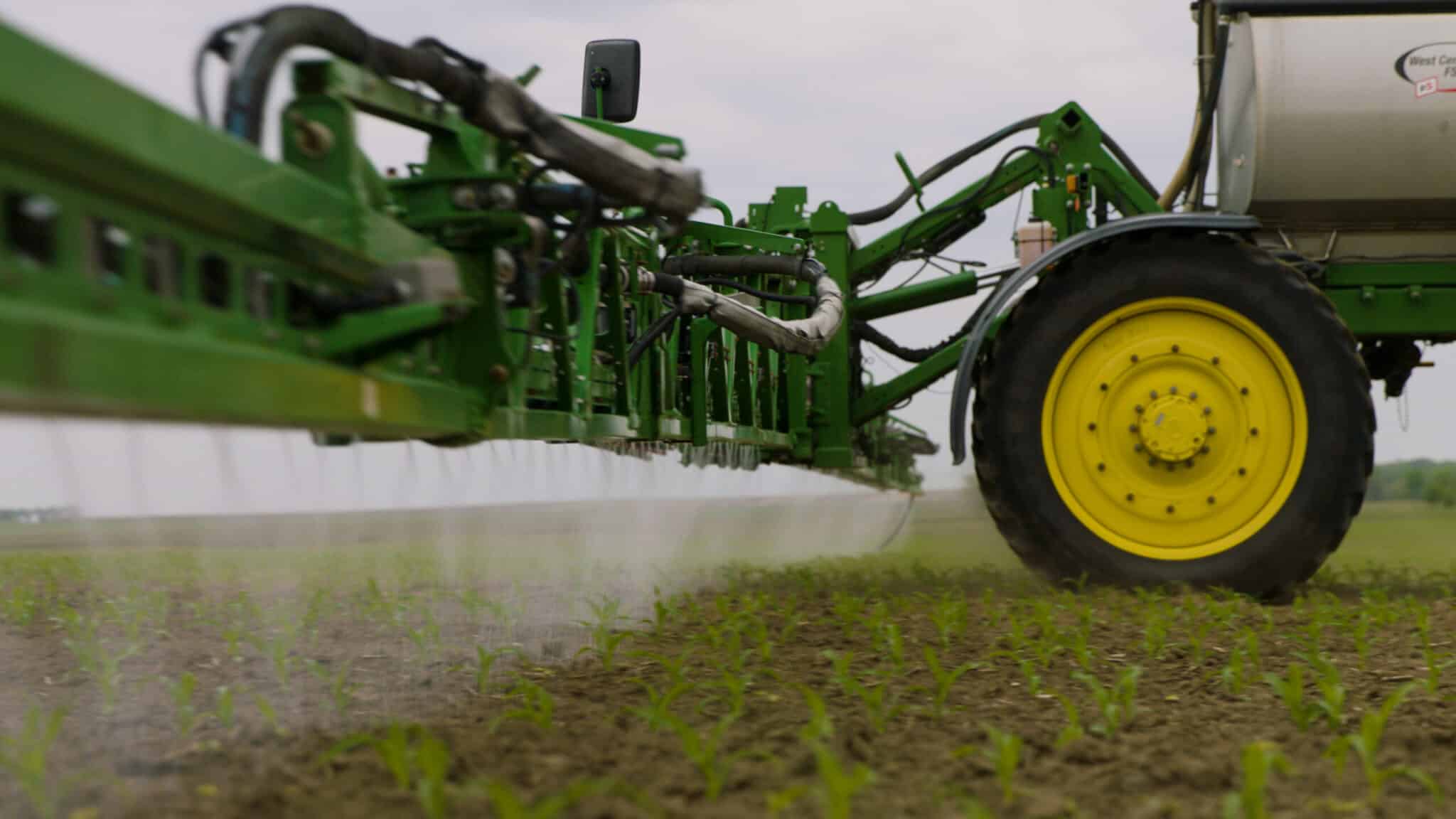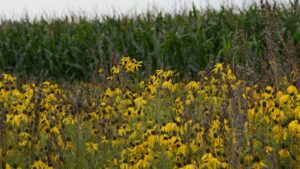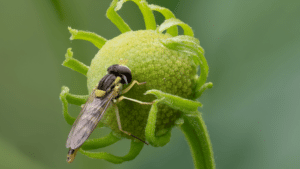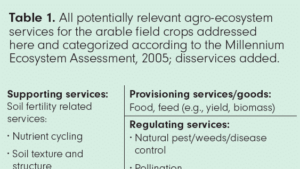Small adjustments make a big difference for stewardship.
Springtime crop protection spray applications are often necessary for the success of the nation’s food system but stewardship and safety are always top of mind.
Tom Smith, executive director of the National Pesticide Safety Education Center, says the center’s goal is to support Extension Pesticide Safety Education programs.
“One of the things we do is provide resources and science-based information for educational efforts in each state, and certainly, a large part of that is focused on pollinator safety and stewardship,” Smith says.
The center has worked closely with the Honeybee Health Coalition to amplify its message that labels and best practices for pesticides really do matter.
“The label is the law,” Smith says. “I always say to ‘read it, then read it again and follow it.'”
Farmers and applicators can find information about rates of application, protective equipment that is needed, and precautions to protect other wildlife, whether pollinators or aquatic animals and birds.
Ram Ramalingam, group leader for application technology at Syngenta, is one of the scientists who contributes to the research behind those labels.
“We have a team of chemists, engineers and biologists who look at how products will be handled and applied to ensure minimal waste of the product and maximum protection for the applicator and environment, Ramalingam says.
Technology
There is extensive work that goes into ensuring products are safe and effective, and Syngenta scientists take spray drift very seriously.
“One of the ways to alter the potential for drift is to design the nozzle itself to use larger droplet sizes, which reduces the potential for droplets to move off target as they are being applied,” Ramalingam says.
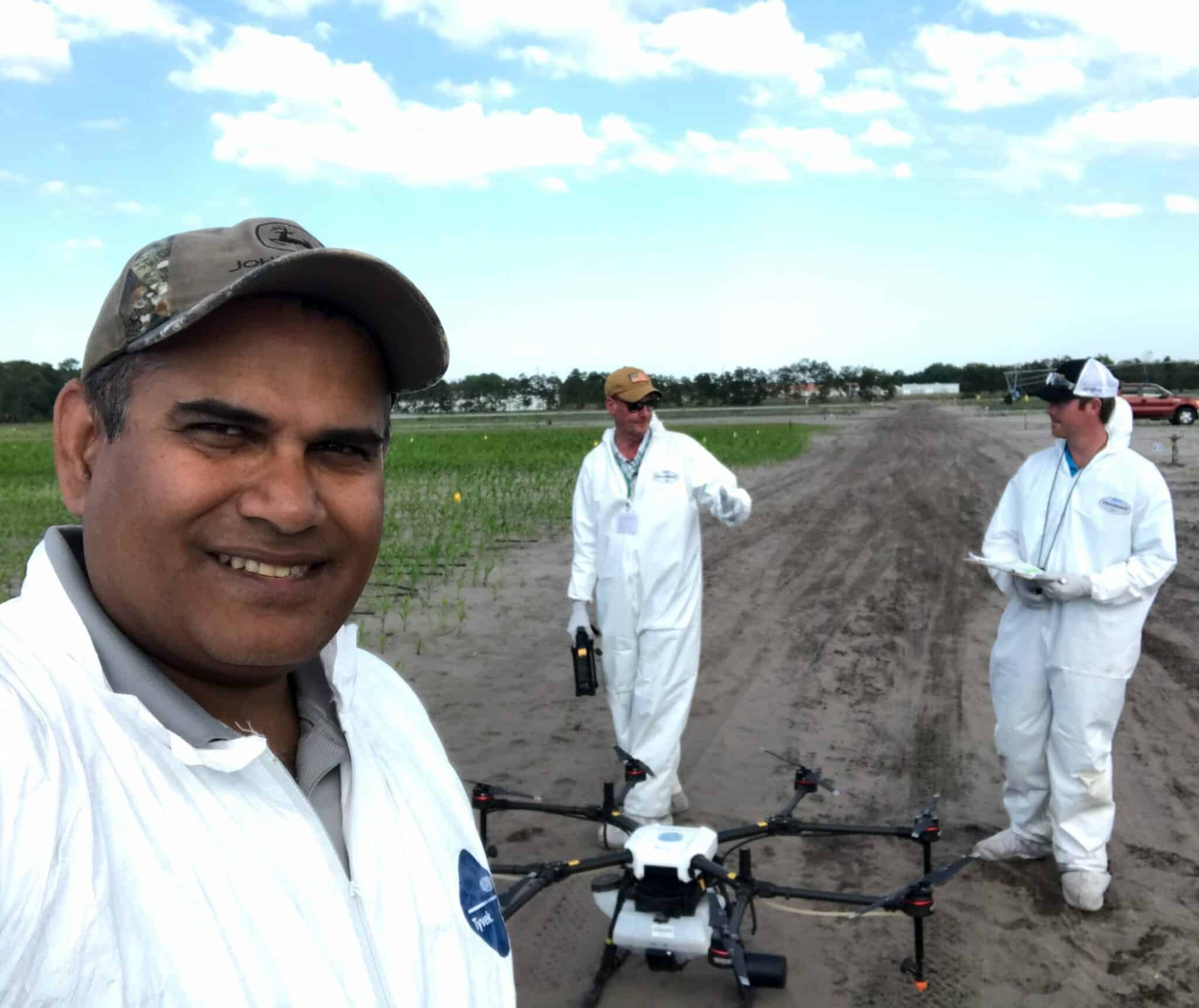
Another way to reduce potential for drift is to manipulate the visco-elastic properties of the solution by adding something to the formulation or to the tank as product is being applied.
“We call those drift reduction additives, by using a combination of those two technologies we can have a good handle on managing and preventing spray drift,” Ramalingam says.
Timing
Taking a look at the best time for applications can also make a big difference.
Smith says that pollinators aren’t active at night, so that’s the safest time for any application, but even adjusting a few hours to avoid peak foraging hours is helpful.
“We talk a lot about honeybees, but the same guidelines apply for other native pollinators as well,” Smith says. “They will be foraging when daytime temperatures are above 55- or 60-degrees Fahrenheit.”
Temperature inversions, in which a layer of cool air at the surface has a layer of warmer air over it, are another important factor to understand when it comes to finding the ideal time for applications.
“We can sometimes get movement off that field with temperature variations between the ground and air, which most often happens right before dawn and dusk, so that’s another thing to consider,” Smith says.
Adjusting the timing of a pesticide application is the most common and often easiest adjustment to make. “Changing the time that you spray is a pretty simple step to take,” he says. “Not only are the pollinators not going to be foraging, but there are often lower wind conditions in the evening so you tend to not have as much potential for drift. Many plants even close up their flowers at night, so that’s a good time to be spraying.”
Many professional aerial applicators have invested into planes that are equipped with the technology needed applications for nighttime spraying when pollinators are not present.
Ramalingam says that no product can be applied when the crop is flowering, so farmers need to plan ahead and schedule applications around those times.
“We have to avoid that vital stage when pollen is transferred,” he says.
Technique
Ramalingam also says that speed and style of application is also critical to understand.
“Applicators need to use the correct amount of product to ensure they don’t deliver more or less than what is needed,” he says. “We need to make sure they have the tools to effectively deliver the dose without over- or under-applying.”
Whether a product is delivered by backpack sprayer, a ground spray boom moving at 15-20 miles per hour, or even by aircraft at 150-180 miles per hour, minimizing drift is possible.
“We work with the agriculture equipment industry as well, so we can engage with them to develop solutions that provide effective dose transfer and offer maximum field efficiency to the grower,” Ramalingam says.
Trimming
However, another easy adjustment is to take the time to mow any blooming plants near a field before an application is made.
“It’s common to have dandelions and other flowering weeds on borders and edges of fields, so we certainly want to be aware of what plants are flowering even if it isn’t in the field itself. It’s important to mow those areas first so pollinators won’t be foraging,” Smith says.

Smith says that even farmers who have added pollinator habitats to their land need to consider mowing those areas before a crop protection product application.
“Mowing is a short-term impact,” he says. “It won’t eliminate the habitat you’ve created, and in fact, many plants will produce a greater flush of flowers rather rapidly after trimming them.”
Training
Ramalingam says that part of his job is to ensure the research they have is communicated effectively.
“We have fascinating tools to generate data, and we have to make sure that information reaches the end user and makes sense,” he says. “That’s why communication really matters.”
Smith says farmers who apply products themselves are considered private applicators, and they are required to attend trainings to become certified as private applicators. They also attend ongoing training, some of which is crop-specific to maintain their certification. However, educational efforts should not stop there.
“There are a number of resources we recommend in addition to those trainings that are focused on protecting pollinators,” Smith says.
Many states have Pollinator Protection Plans as well, and some commodity groups are developing their own best-management practices for farmers to follow.
Continuing to increase habitat is another stewardship step to consider in the spring. “While we want to encourage mowing directly before a pesticide application, we also want to encourage farmers to let some of those fence rows grow up in wildflowers, or to put in pollinator habitat in non-crop areas,” Smith says.
We recognize the importance of pollinators and want to do everything we can to protect them while increasing stewardship of these crop protection tools that farmers rely on.”
Ramalingam agrees, “We have to protect the crop and the pollinators.”


